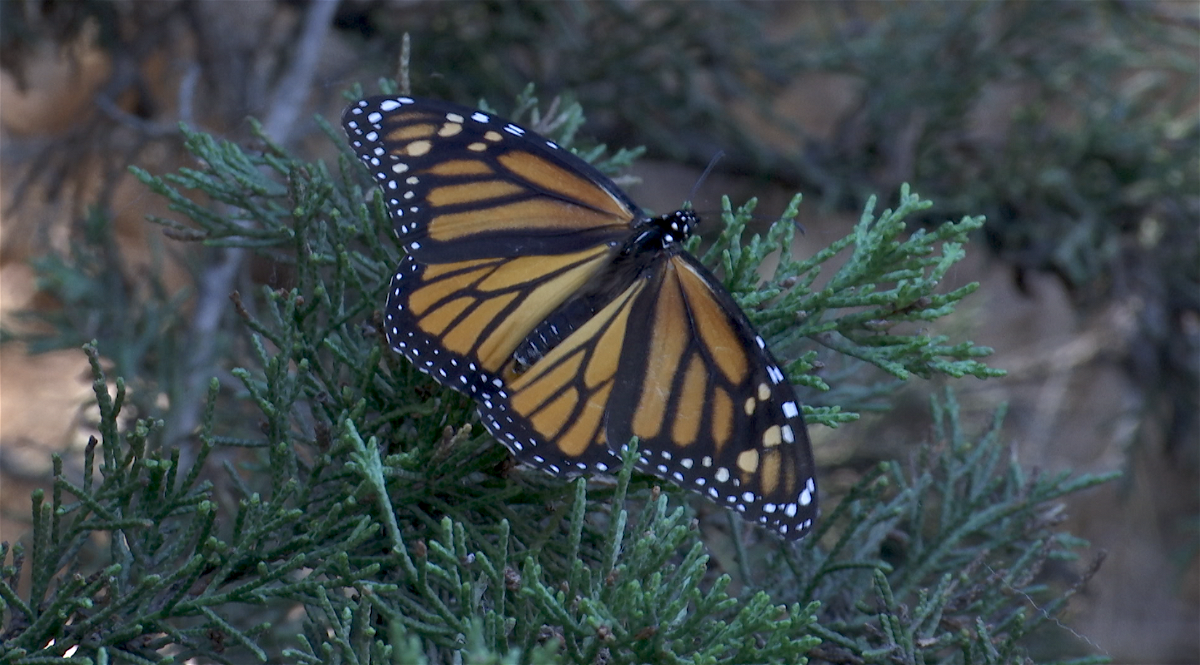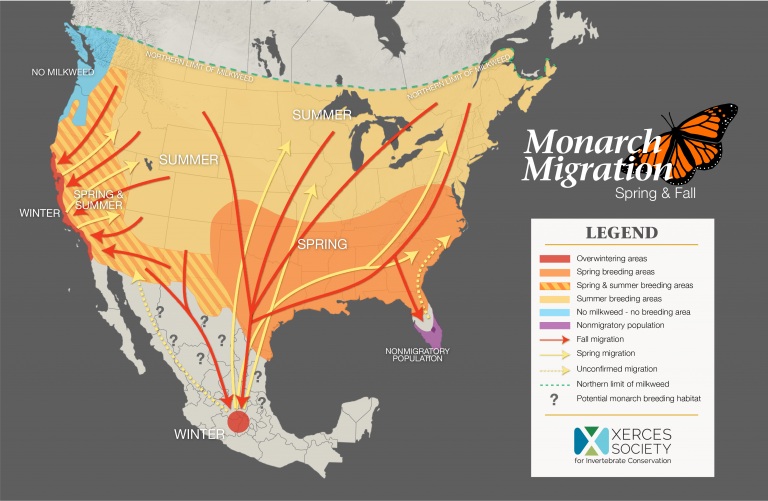U.S. Fish and Wildlife proposes federal protection of monarch butterflies and their habitats in California

CENTRAL COAST REGION, Calif. – One of the most iconic insects on Earth and annual visitors to the Central Coast region, the Western Monarch Butterfly, may be receiving federal protection to help the species rebound from dramatically low numbers this year.
On Tuesday, the U.S. Fish and Wildlife Service has proposed the inclusion of the monarch butterfly as a threatened species under section 4(d) of the Endangered Species Act.
The federal service agency is also proposing that 4,395 acres of critical habitat for the western migratory population be placed under a critical habitat designation.
Key habitats in Alameda, Marin, Monterey, San Luis Obispo, Santa Barbara, Santa Cruz, and Ventura counties would be part of the proposed designation.
A critical habitat designation does not impose requirements on private-owned or state-managed lands unless the action involves federal funding, permits, or approvals detailed the U.S. Fish and Wildlife Service.
"Economic prosperity and ecological health go hand in hand," explained Lesli Allison, Chief Executive Officer of the Western Landowners Alliance. "Working lands, which provide the food, fiber and energy on which people depend also provide essential habitat for the majority of wildlife species, including monarch butterflies. Pollinators are an integral part of our ecosystem and it is incumbent upon all of us to do what we can to ensure these species can survive and thrive. We look forward to learning the details of the proposed rule and working with the U.S. Fish and Wildlife Service to design partnership-based solutions which benefit both people and pollinators."
The image below, courtesy of the Xerces Society, shows the distinctive locations the monarchs head to at various parts of the year.

Monarch butterflies are broken down into two groups based on their migratory patterns.
The larger, eastern migratory group winters in the mountains of Central Mexico and the western migratory group joins us here on the Central Coast of California.
According to the U.S. Fish and Wildlife Service, in the 1980s, over 4.5 million western monarchs clustered in overwintering areas of Coastal California, but today, the migrating insects have declined by more than 95 percent since then, putting the western populations at greater than 99 percent chance of extinction by 2080.
During the same period, the probability of extinction for the eastern migratory group ranges from 56 to 74 percent detailed the U.S. Fish and Wildlife's most recent species status report.
Loss of breeding, migratory, and overwintering habitats as well as exposure to insecticides and the broader effects of climate change are the most significant threats to the species shared the U.S. Fish and Wildlife Service.
The winged insects tend to cluster in large groups, shown in the image below from the California State Parks, in groves that offer protection from the wind.

"Sustaining wildlife is as foundational to the modern culture of private forest owners as sustaining rural communities," said Dave Tenny, President and CEO of the National Alliance of Forest Owners. "This stewardship ethic is especially beneficial to monarch butterflies and other pollinators, because we intentionally provide the habitat they need as an essential part of our businesses. By managing our forests in this way, we do our part to help monarchs thrive while helping people take pride in knowing they are part of a conservation solution."
Want to learn more about how you can help the monarch butterflies that winter here? Click here.
The proposal is not a done deal though.
The federal agency's proposed inclusion and critical habitat designations will be published in the Federal Register on Dec. 12, 2024, docket number FWS-R3-ES-2024-0137.
That docket number will also include information about upcoming virtual meetings and public hearings about the proposal.
Instructions on how to submit a comment can be found here.
Once published in the Federal Register, a 90-day comment period will begin that ends on March 12, 2025.
"Monarch butterflies epitomize simple beauty, grace, strength and determination. They are one of our most beloved and recognizable ambassadors for biodiversity. With their extraordinary long-distance migration and widespread cultural significance, they represent hope, resilience and interconnectedness," shared Dan Ashe, President and CEO of the Association of Zoos and Aquariums. "The [U.S. Fish and Wildlife] Service’s listing decision is an acknowledgement of their precarious status, and a clarion call for communities, landowners, and organizations to come together. The Association of Zoos and Aquariums and its 251 accredited members is committed to joining this effort and helping save this amazing species from extinction."
